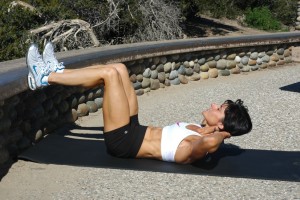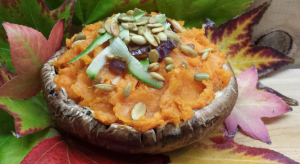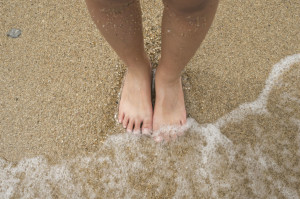
All scuba divers have “wash board abs” – some just have a load or two of laundry resting on top.
Whether they are visible or not, abdominal muscles are essential in supporting the back and stabilizing the body through complex movements associated with scuba diving. Without question a balanced abdominal strengthening program is an important component of scuba fitness and should be developed in conjunction with back strengthening and flexibility early in an exercise program. The challenge is finding the best method for individual divers to strengthen the abdominal muscles without creating or aggravating certain back conditions. While the basic crunch is considered the most effective abdominal exercise, it is not necessarily an option for divers with upper back, neck and shoulder conditions or weakness. Divers with bulging discs and/or low back complications may also find ball exercises difficult or contraindicated to their condition. Contrary to popular belief, it is never appropriate to place an unstable torso on an unstable apparatus. Numerous studies demonstrate, with the exception of the Oblique Abdominal Muscles, all muscles of the abdominal walls are engaged at a greater intensity performing exercises on benches or solid surfaces rather than an on exercise balls. Maladies of the back include misalignment from accident or injury, skeletal deviations such as scoliosis, degeneration and disease such as arthritis, and pain from tight hamstrings, lack of physical activity, and/or muscle imbalances. With a few modifications to the basic crunch and a variety of efficient abdominal exercises that also strengthen the back, divers can protect and work around maladies of the spine improving the overall condition of the back while safely advancing abdominal training to a more intense level.
Remember, strengthening the abdominal muscles and reducing body fat around the torso are distinctly different types of training. Aerobic exercise is the key to leaning out the waistline while resistance training strengthens the abdominal muscles.
Performing the basic crunch in this fashion reduces recruitment of the hip flexors and allows more focus on the anterior abdominals. Begin with a natural position of the spine. If needed a small folded towel or pad may be placed under the low back for added support. Contract the abdominals (pull the belly button toward the spine), place hands behind the head for gentle support, lift the chin upward and inhale deeply through the nose. Exhale while continuing to pull the belly button toward the spine and lifting the upper body as shown until the curve of the low back flattens against the floor or pad. Increasing the lift of the upper body any further would involve enough other muscles to become less efficient and increase risk of injury. Inhale while maintaining the abdominal contraction and lowering the upper body to the starting position and repeat.
Modification: Divers with precluding conditions of the upper spine, neck and shoulders may perform the abdominal contraction portion of this exercise for repetitions without raising the upper body and with a pad under the neck.
For a complete torso strengthening workout for scuba diving purchase FitDiver® Abs Mobile App at Google Play and App Store on iTunes.
Follow ScubaFit® on Facebook.



 Sweet Potato stuffed Portobello Mushrooms are a delicious meal for scuba divers focused on eating healthy this holiday season. As the main course or a side dish all divers will enjoy the earthy fall flavors and aromas. Vegetarian divers rely on the portobello mushroom as a meat substitute. The mushroom has small amounts of macronutrients; is naturally low in calories, fat, and sugar, with nearly equal amounts of protein and carbohydrates, and a good amount of potassium. The portobello mushroom has a neutral mild flavor that is a blank canvas for seasonings that satisfy a wide range of taste preferences. This version of stuffed portobello mushrooms is prepared on a cedar plank to add smokiness.
Sweet Potato stuffed Portobello Mushrooms are a delicious meal for scuba divers focused on eating healthy this holiday season. As the main course or a side dish all divers will enjoy the earthy fall flavors and aromas. Vegetarian divers rely on the portobello mushroom as a meat substitute. The mushroom has small amounts of macronutrients; is naturally low in calories, fat, and sugar, with nearly equal amounts of protein and carbohydrates, and a good amount of potassium. The portobello mushroom has a neutral mild flavor that is a blank canvas for seasonings that satisfy a wide range of taste preferences. This version of stuffed portobello mushrooms is prepared on a cedar plank to add smokiness.  During my years as a competitive power lifter I utilized cross training to enhance my performance. Each summer I selected a completely different activity from my usual training to stimulate mind, body and spirit. One of my most memorable experiences was the season when I took instruction in Goju Ryu, an Okinawan style of Karate.
During my years as a competitive power lifter I utilized cross training to enhance my performance. Each summer I selected a completely different activity from my usual training to stimulate mind, body and spirit. One of my most memorable experiences was the season when I took instruction in Goju Ryu, an Okinawan style of Karate.